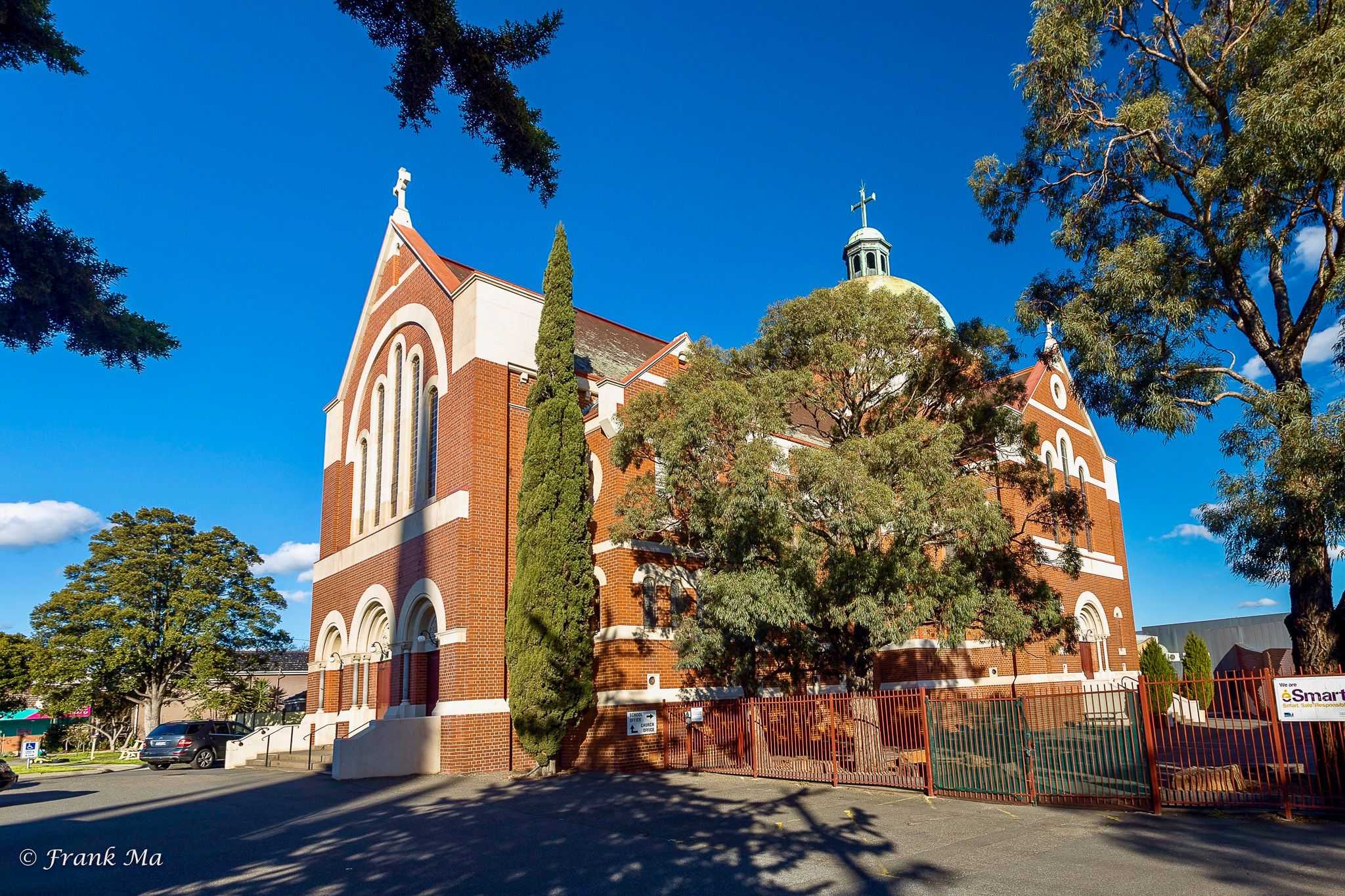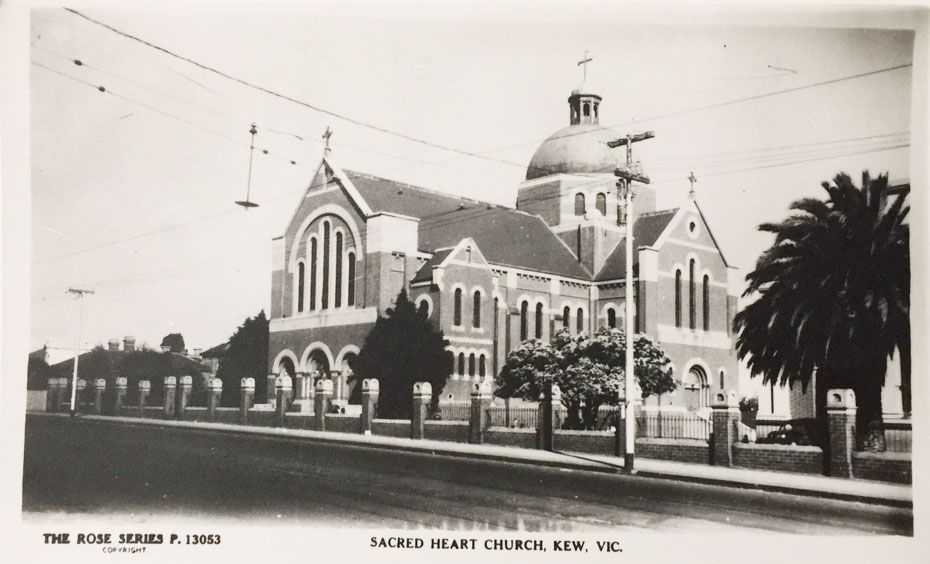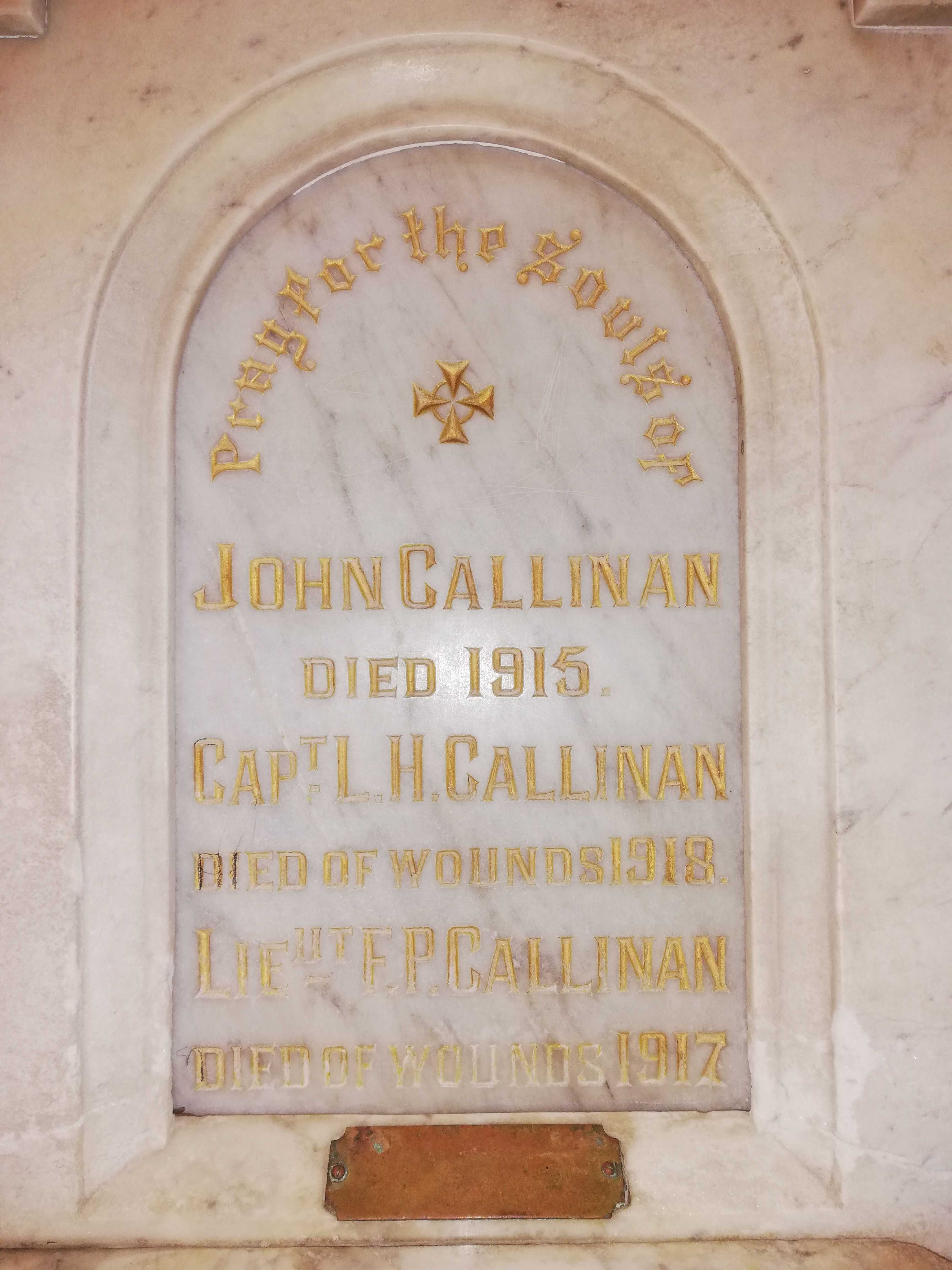The history of the church goes back to 1872 when Jesuits purchased land in Walpole Street. On 14 February 1875 Archbishop Gould had laid a foundation stone for a school.
Among the earliest Masses celebrated in Kew was one in 1864 at 'Yarra Bend Asylum. In 1865 Bishop Goold said Mass there. In the early years, the Jesuit Fathers were in charge of the 'Mission'. Fr Nolan SJ was the driving force behind the Mission but other Jesuits associated with Kew were Fr Dalton SJ, Fr Mulhall SJ, and Fr O'Flynn SJ. Before the Chapel-School was built on the corner of Walpole and Walton Streets, Kew Catholics went to Mass at Richmond, Collingwood, and after its opening in 1869, the Church at Hawthorn.
By 1899 the land for the current church was purchased after a donation by Mr James Crotty of £3,000.00. The first Church was to be used as a school on weekdays, and as a Church on Sundays.
December 15th 1918 saw the Foundation stone of the current church laid by Archbishop Mannix. There were 5,000 people in attendance. Dimensions of the church are 139 feet long, 77 feet wide, 48 1/2 feet high and it could seat 850 people. The cost of construction was £15,000.00.
THE FONT AT THE REAR OF THE CHURCH - A STORY OF SERVICE AND SACRIFICE By Fermin Navascués
When the personal effects of Lieutenant Frank Paul Callinan were returned to his mother, Mary Callinan, they included a rosary and devotion book he carried throughout his service during World War I, clearly a testament to his faith. Mary’s two sons enlisted and both made the ultimate sacrifice.
Mary was a new parishioner to Sacred Heart Kew having moved to 14 Walpole St from ‘Innisfail’ 147 Hoddle St, West Richmond). As Mary’s change of address had not been registered with the Army Records Office, Army records show “A telegram reporting his death was forwarded to the clergyman at Kew on 19.05.1917”. Perhaps this clergyman was able to bring some comfort to Mary rather than have her suffer the cold delivery of a telegram.
Lieutenant Frank Paul Callinan, was born 1895 in Ballarat, single and a clerk. He was educated at St Patrick’s College, Melbourne and spent 2 years in cadets. He then spent 3 years in the Citizen Forces as a Field Artillery sergeant with No.3 Brigade, Maribyrnong before enlisting 30.03.1916. In only 5 months, he was commissioned as a lieutenant on 01.09.1916 (probably fast-tracked due to his military experience as a civilian) and 02.10.1916 embarked the A60 Aeneas to Plymouth. Five months later he was posted to 3rd Field Artillery Brigade in France and only three weeks later whilst visiting his brother Laurence on 04.05.2017, was “struck by an exploding bomb dropped from a Hun aeroplane”. He died two days later from abdominal wounds on 06.05.1917 aged 22, and is buried in the military cemetery at Grevilliers, France.
Frank’s older brother, Capt. Laurence Hurley Callinan, born 07.05.1894 in Ballarat was also single and a clerk. He enlisted to the British Army in 1915 and as a sergeant, embarked H.M.A.T A71 Nestor to Egypt. He was promoted to Lieutenant on 12.03.1916 and transferred on 16.06.1916 to 24th Field Artillery Brigade in France and also served in Belgium in 1917. On 31.01.1918 he was detached to the artillery school in England. Returning to France to the 3rd Artillery Brigade, he was wounded from gas and died from its poisoning on 09.09.1918 at the 8th General Hospital in Rouen. His Funeral was conducted on 10.09.1918 by Rev E Kelly at the Saint-Sever military cemetery, France. Mary endured a great deal of grief over the previous four years. Her husband, John Callinan was a miner at the Young Sulieman mine in Ballarat East and then a clerk with the Way and Works Branch of the Victorian Railways when he died. He had a miraculous escape as a miner, when in a shaft 257 ft. below ground he went to the aid of a Michael Callinan whose ankle was jammed in the bucket tail rope as the engine began to haul it up. John’s wrist also got jammed and they were both hauled to the surface, Michael head down! When the braceman heard one of them call out, he stopped the engine, suspending them within 50 ft. of the surface and as the newspaper reported, and “prolonging their agonies”. Realising the state of affairs, they were hoisted to the surface and suffered only “very slight injuries”. He is shown on the font as having died in 1915 but in fact his death was registered in 1914. The funeral left his residence at 105 Church St, Richmond and was buried in the Coburg General Cemetery on 30.10.1914. Frank and Laurence also had two sisters, Eileen and Molly.
This tells the story of the font at the rear of the church. It was dedicated in memory of the Callinan’s service and sacrifice, representing just one family in the parish marked by turbulent times. There are three other fonts in our Church with dedications yet to be brought to life.
“They shall grow not old, as we that are left grow old: Age shall not weary them, nor the years condemn. We will remember them” (Laurence Binyon’s, “For the Fallen”).


